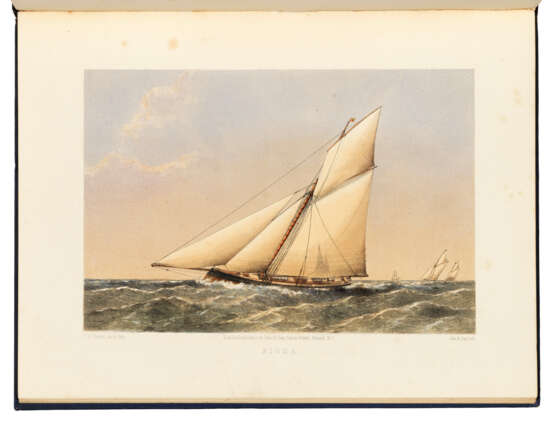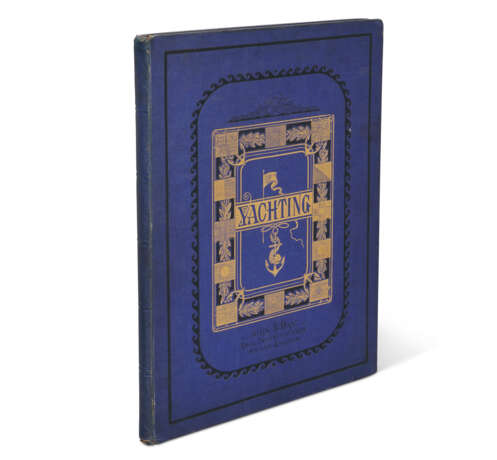ID 993022
Lot 73 | DUTTON, T. G. (1820-1891)
Estimate value
£ 4 000 – 6 000
Yachting: A Series of Twelve Celebrated Yachts. London: John B. Day, [1877].
Rare series of yachting plates by one of the most celebrated Victorian marine artists. Dutton was one of the most prolific lithographers of the 19th century, and today The National Maritime Museum, Greenwich, holds an almost complete collection of his published lithographs. Yachting presents a suite of 12 hand-coloured plates taken from Dutton’s commissions at the bequest of the wealthy ship-owners and builders of the day. Each plate is accompanied by a descriptive text.
The ships featured are among the ‘best known and most admired craft in the pleasure navy’ (Introduction). They are: 1. Victoria and Albert Steam Frigate; 2. Osborne Steam Sloop; 3. Arrow Cutter; 4. Corisande Yawl; 5. Egeria Schooner; 6. Fiona Cutter; 7. Guinevere Schooner; 8. Oimara Cutter; 9. Florinda Yawl; 10. Gwendolin Schooner; 11. Kriemhilda Cutter; 12. Livonia Schooner. Dutton's chromolithographs were the subject of an exhibition at the Scottish Maritime Museum in 2002; Bobins II, 639.
Folio (336 x 272mm). Half-title, title printed in blue and black, 12 tinted lithographic plates, colour printed flags in text, pp.2 of publisher’s ads at rear with prices annotated in ink manuscript (scattered spotting throughout). Original blue cloth stamped in black and gilt, page gilt edges (re-backed, slight rubbing to extremities, heavier to head and foot of spine with some minor loss).
Special notice
No VAT is payable on the hammer price or the buyer's premium for this lot. Please see the VAT Symbols and Explanation section of the Conditions of Sale for further information
| Place of origin: | Northern Europe, Europe, United Kingdom |
|---|---|
| Auction house category: | Printed books |
| Place of origin: | Northern Europe, Europe, United Kingdom |
|---|---|
| Auction house category: | Printed books |
| Address of auction |
CHRISTIE'S 8 King Street, St. James's SW1Y 6QT London United Kingdom | |
|---|---|---|
| Preview |
| |
| Phone | +44 (0)20 7839 9060 | |
| Buyer Premium | see on Website | |
| Conditions of purchase | Conditions of purchase |





